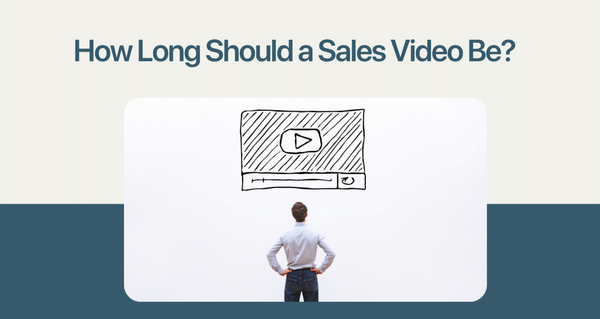New leads are good, but it's important to know how to handle them correctly.
You might think that you are doing a good job by following up on prospects, but in reality, most sales reps never have any follow-up plan or most commonly known as sales cadence.
They'll typically make one or two contacts and, when they don't hear back from the customer, move on to another prospect instead of setting up a process and working towards converting them to customers in a smarter way.
This inconsistency slows down your overall process, which results in opportunities slipping through your fingers!
Salespeople can use sales cadence to increase revenue, improve customer satisfaction, and create brand loyalty. This post will cover how you can set up your own sales cadence process for your team and grow engagement in the right way top 5 sales cadence examples!
Let's dive in…
What is Sales Cadence?
A sales cadence is a series of predetermined steps designed to improve the consistency and efficiency of your sales process. Sales cadences can be customized for different interactions, including video messages, phone calls, sales email outreach, in-person meetings, etc.
It is a sales technique for ensuring that salespeople meet their quota consistently. It refers to the strategy of setting out specific tasks to be completed with frequency rather than working until you reach all your goals in one sitting.

Sales cadence is the metric that most B2B or B2C companies use to measure how often a rep sells or makes contact with a prospect. This type of sales metrics also helps businesses understand what is important for their success and improve it.
For example, if there were information about which employees sell more than others, they would know who needs training on their pitches or performance to do better in their job function.
The process starts with finding out what prospects want. It then establishes credibility before transitioning into discussing pricing options that will best suit their needs (based on previous experience). Finally, you'll move on to closing deals while maintaining good relationships with the prospects along the way.
.png)
How Does a Sales Cadence Help Sales Reps?
The use of a cadence gets your message to the right target audience, at the right time, in the right context.
It helps get you heard without wasting time crafting an email that creates noise rather than value.
With sales cadence, sales reps can follow up at the right time. There are many different stages your prospects can exist at but what if you could help them move through those steps more quickly?
You would close more deals in a shorter amount of time! That's where regular follow-up comes into play; by making sure that leads stay engaged with their needs and wants right up until they're ready to buy something from you.

Benefits for Sales Reps
Provides a structured way for follow-up campaigns that automates the sending of calls and emails based on a prospect's specific needs.
Remove the guesswork from the rep's approach
Maintain consistency for prospect interaction
Close more deals
Benefits for Businesses
Helps to keep sales teams moving forward
Keeps the pipeline full of qualified opportunities
Ensures that reps are consistently working on their target accounts and contacts
Help with account-based selling
Allows your team to focus on high-value activities
How to Build a Sales Cadence?
Building a sales cadence is never easy. Many factors differentiate one type of market from another, which means you need to tailor your approach accordingly for every possible audience or group!
However, the process involves trial and error until you find what works best for your business.
Here are the steps that all sales reps should follow when designing their cadences:
1. Timing is Important
You may think that contacting your prospective customers with the intent of getting their attention is a no-brainer, but if you've ever gotten straight up ignored or worse—marked as spam by them, then perhaps there's something wrong.
The last thing that any company would want is an unhappy customer before they've even had a chance at speaking with them, which makes this all too common occurrence in sales emails.

The research conducted by InsideSales indicates that the optimal sales cadence has several qualities:
a) Wait at least one day between contact attempts but no more than four days.
b ) Increase the time interval after each subsequent attempt up to six or seven days - this means you should space out your messages so as not to be too aggressive with prospects.
2. Contact the Prospects With the Right Mode of Communication
A good sales cadence should include email, phone calls, and more to be sure that you're reaching out.
The platforms where your customers are the most active will dictate which channels of communication they prefer. Use this information when sending InMail's or making other contact attempts on their behalf using LinkedIn messages!
In the Relationship Era, it may be a bit longer before you can get in touch with someone. So, for now, you should start by emailing or messaging on LinkedIn and see if they respond!
The most common way to get in touch with someone for the first time is through email, so it's critical that your emails are worth reading—and responding to once they've been read.
But emails have become a boring strategy, to spice up your strategy, include video emails which adds a human touch to the message.
Some of the valuable content you can share via video email are introductory messages, case studies, video testimonials, eBooks, links to an article that answers the prospect's questions etc.
Breeze through this warm-up stage so that when things progress further towards more aggressive channels like phone calls, there won't be any surprises later down the line because of missed opportunities earlier than expected.
3. Importance of the Touchpoint
The duration of your sales cadence should be about two to four weeks. This, of course, depends on the prospect's engagement with emails and phone calls throughout that period, so it may vary depending on what type or stage they are in their journey Northward!
You've now established the right sales cadence, contacted prospects through multiple channels and are sharing high-quality content. But how many times should you contact them?
According to reports by Online Marketing Institute, 7-13 touch points are needed for a qualified lead, while another study from Bridge Group claims that those who make 12 or more attempts perform almost 20% better than colleagues stopping at 8 attempts.
Therefore, sales reps need to set themselves up for success by aiming for 10-15 touches per prospect in their sales cadence.
You can test and adjust this number over time, as well as to adapt it based on who you're trying to reach out to or what type of product/service they provide; but make sure not to stop at 1 call attempt because that would mean missing lots (and I do mean LOTS) of opportunity!
4. Adjust Sales Cadence as Needed
What's your sales cadence? Is it slow and steady or fast-paced? No matter what you decide, be sure to experiment with different speeds to not miss out on any opportunities.
You can't assess how effective your sales cadence is if you're not looking at the right metrics. It doesn't matter what pace or type of message works best, as long as it's delivered in a professional tone and with empathy for potential customers' pain points - this will put them into buying mode.

You need to track the following:
The number of emails or calls it takes to get a response
The number of touchpoints
Click-through rates
The type of content that gets the highest response rates
Number of prospects who convert into customers
You can perform A/B testing by creating two different sales cadences and seeing which performs better.
From there, you should test the winning campaign with a new one that incorporates any potential improvements to your last experiment to improve on an ongoing basis as well!
To get ahead in sales, you need to keep your prospecting strategy on point. The more information about their behavior you can gather before tweaking it will give better results for perfecting this process and getting them into buying mode!
Top 5 Sales Cadence Examples
Sales are not just the act of making a sale. It's also about your prospects feeling like they are being heard and cared for.
Sales cadence is an easy way to set expectations, plan out communications, and track activity with your prospects to create a lasting relationship that will lead to more sales. Here are some good sales cadence examples to get you started:
1. For Typical B2B Sales
When it comes to B2B sales, you want the process of making contact and pushing deals into the next stages as quickly as possible with a sequence of calls and emails.
That's why a typical B2B cadence involves email or phone calls with prospects for them to attempt contacting you back throughout the day.
With Videoform, instead of sending text emails, you can send video emails for a personalized approach in any of the sales opportunities. This is how it looks like:
2. Sales Cadence for Outbound Prospecting
How much should you engage your outbound leads? It's no surprise that it can be tough to follow-up with contacts you don't know.
You can try to be as creative with your cold outreach campaign, but it's best not to use the same amount of touchpoints for each customer.
If you don't hear back from them after 6 tries, give up on that account and move on to other prospects with a strong outbound sales strategy.
If you want to try and warm these leads up before sending out cold emails, then maybe an introduction on LinkedIn with a video message would do the trick. So when your email lands in their inboxes, they'll know who you are as soon as possible after opening emails!
Also Read: 6 Tips to Foster Customer Loyalty With Personalized Videos
3. Inbound Sales Cadence Example
Inbound marketing is all about finding out what your target audience wants and giving it to them. This ideal cadence example will help you find the right frequency in your sales pipeline:
4. Sales Cadence for Leads Who Don’t Schedule a Meeting
If you're getting a lot of requests for meetings or demos from people who never schedule them, it might be worth trying this sales cadence example for desired results.
One way to do this is by asking one simple question on the sign-up form and making sure they're still interested before moving forward with a scheduled time slot and a follow-up strategy.
Once you identify the ideal customer, go ahead with this:
5. The Ultimate B2B Prospecting Sales Cadence
The prospecting sales cadence is a set of steps that you can use to make winning B2B product recommendations and close deals with quality leads.
The process starts by understanding your audience and asking insightful questions about their needs or problems to form relationships by sending a personalized email or connection request on LinkedIn with a video message.
Automate Your Sales Cadence To Close Faster!
Videoform's automation feature helps you automate your sales cadence by setting up targeted meetings or emails at the right time.
Videoform lets you send emails with easy-to-use automation templates to engage with your prospects in a personalized manner along with a structured framework.
The software also tracks performance data, including email open rates, so that businesses can see what works best when engaging potential customers individually.






